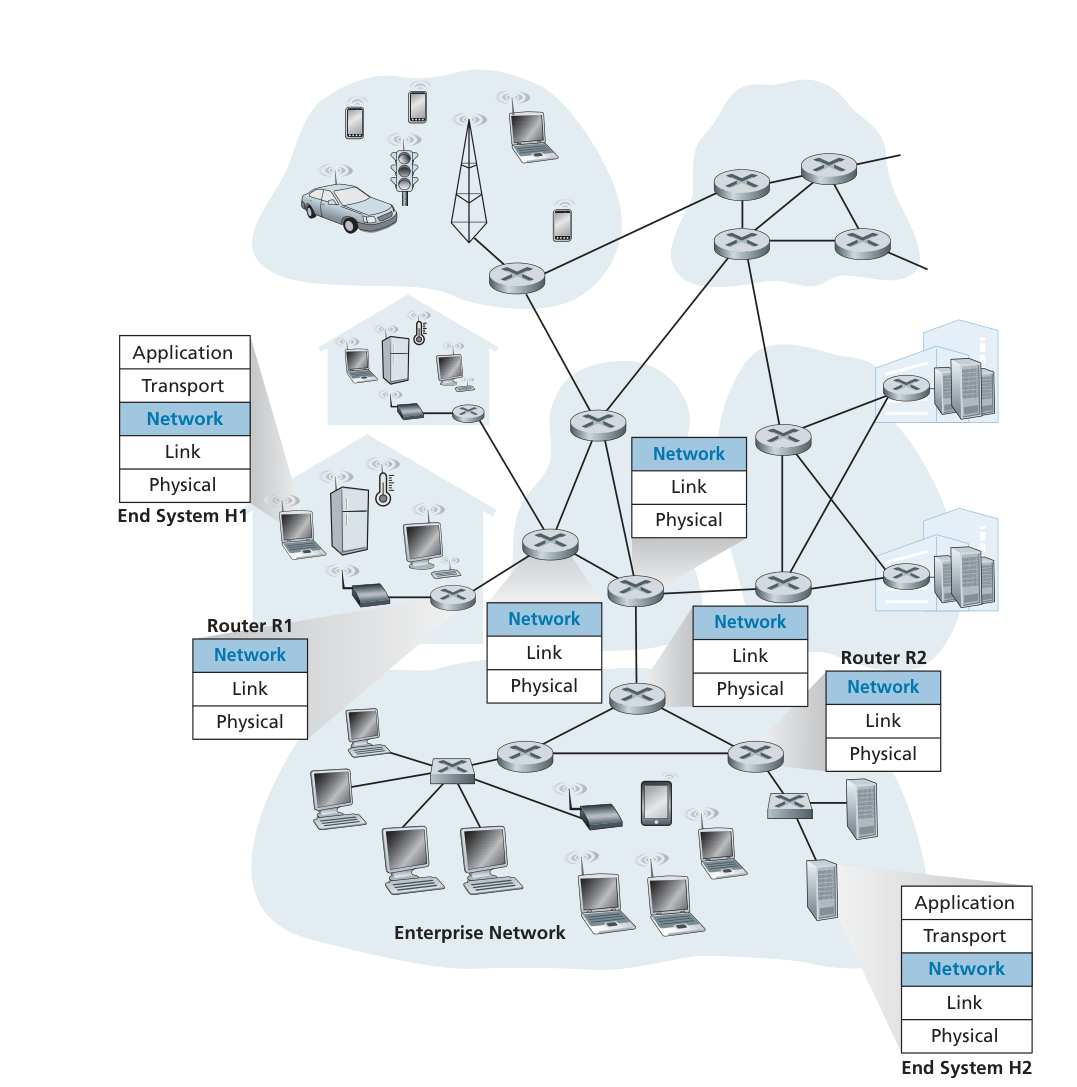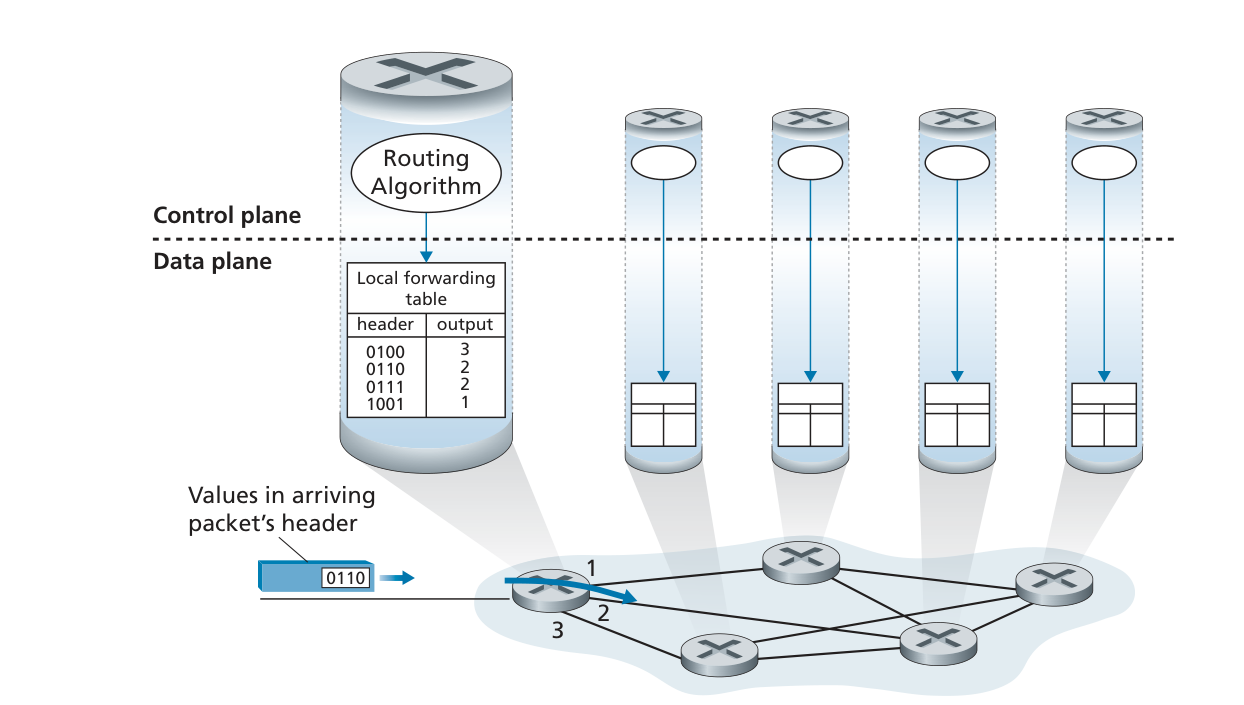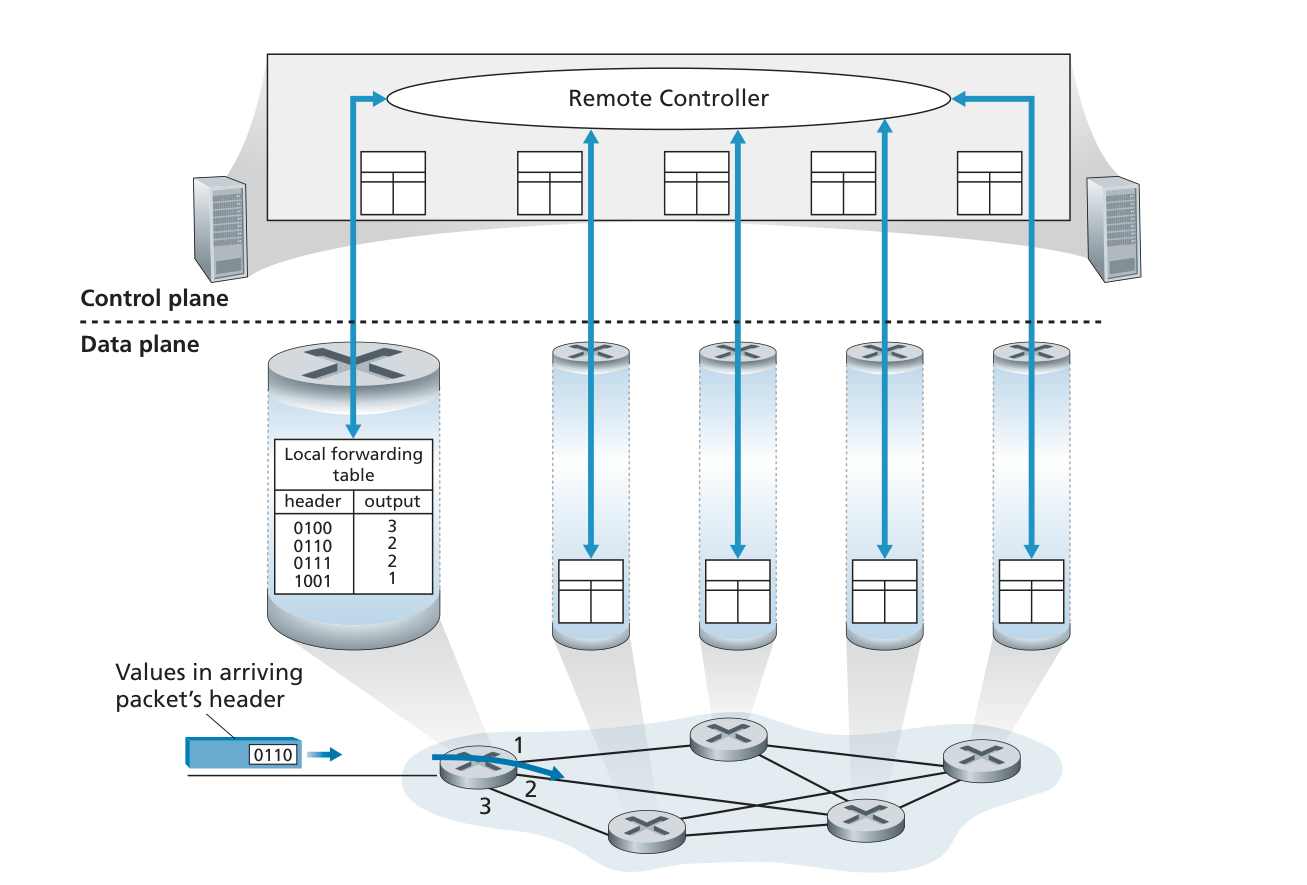Chapter 4 The Network Layer (Data Plane)
The network layer can be decomposed into two interacting parts:
- the data plane
The data plane functions of the network layer—the per-router functions in the network layer that determine how a datagram (that is, a network-layer packet) arriving on one of a router’s input links is forwarded to one of that router’s output links. - the control plane
The control plane functions of the network layer—the network-wide logic that controls how a datagram is routed among routers along an end-to-end path from the source host to the destination host.
4.1 Overview of Network Layer

The network layer in H1 takes segments from the transport layer in H1, encapsulates each segment into a datagram, and then sends the datagrams to its nearby router, R1.
At the receiving host, H2, the network layer receives the datagrams from its nearby router R2, extracts the transport-layer segments, and delivers the segments up to the transport layer at H2.
The primary data-plane role of each router is to forward datagrams from its input links to its output links; the primary role of the network control plane is to coordinate these local, per-router forwarding actions so that datagrams are ultimately transferred end-to-end, along paths of routers between source and destination hosts.
Note that the routers in Figure 4.1 are shown with a truncated protocol stack, that is, with no upper layers above the network layer, because routers do not run application-and transport-layer protocols such as those we examined in Chapters 2 and 3.
4.1.1 Forwarding and Routing: The Data and Control Planes
The primary role of the network layer is deceptively simple—to move packets from a sending host to a receiving host.
To do so, two important network-layer functions can be identified:
- Forwarding
It is typically implemented in hardware. - Routing
The network layer must determine the route or path taken by packets as they flow from a sender to a receiver. The algorithms that calculate these paths are referred to as routing algorithms.
It is often implemented in software.
A key element in every network router is its forwarding table.
Control Plane: The Traditional Approach
The routing algorithm determines the contents of the routers’ forwarding tables.

Control Plane: The SDN Approach

Figure 4.3 shows an alternative approach in which a physically separate, remote controller computes and distributes the forwarding tables to be used by each and every router.
